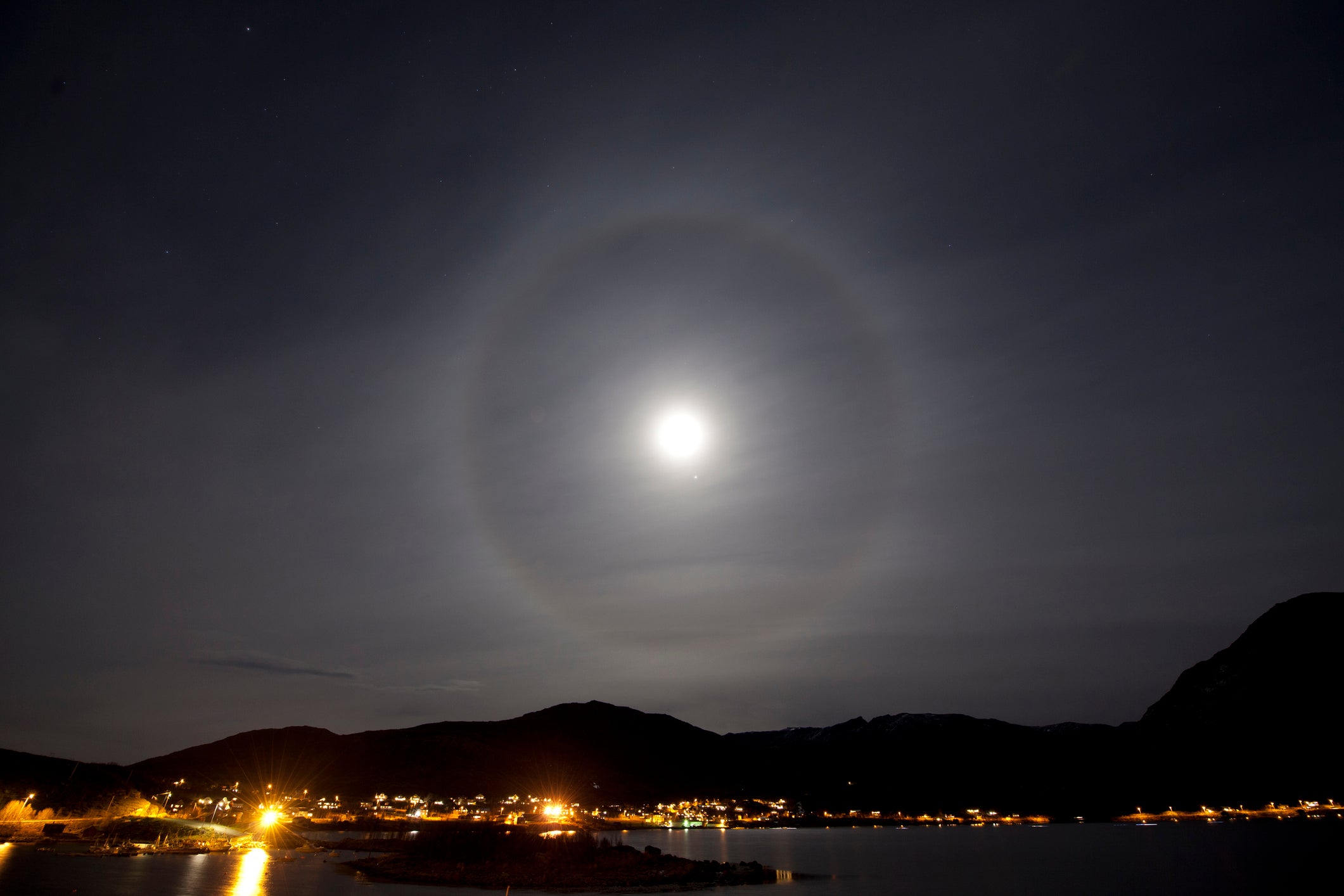Why do some moons have halos, and how fast is our galaxy moving?
We explore the curious questions that science can answer

Sometimes you can see a halo of light around the moon. What causes this?
There are two possible explanations. It could be a corona – a round patch of brightness, two or three times the diameter of the moon, often with a hint of colour around its edge. This is caused by diffraction of moonlight by tiny drops of water in a thin veil of misty cloud, usually at low levels in our atmosphere. A corona often precedes a warm front, when the thin veil of cloud thickens and produces drizzle, and then possibly heavy rain.
Alternatively, there is an effect that is, in fact, known as a “halo”. This is a much larger, bright circle around the moon (radius 22 degrees) which is only bright at its outer edge. The halo is caused by reflection of moonlight from ice crystals in a thin veil of high-level, cirrus-type cloud. A halo is often seen in spells of fine weather.
What is a red dwarf?
A dwarf star is a small, low luminosity star at the end of its life. Dwarfs are usually white, but come in a variety of colours that change as time passes and the star cools. Red dwarfs have a temperature of about 2,500K.
While stars are burning hydrogen, they are held together by gravity, and kept “inflated” by the heat and light these nuclear reactions generate. But once a star runs out of fuel it often becomes a red giant – a swollen expanse of gas at low temperatures. What happens next depends on the star’s mass. Low-mass stars tend to lose their outer envelope of gas, which drifts off into space, leaving a small core – a white dwarf.
Matter in white dwarfs is a degenerate gas, a strange state where all the electrons are stripped from their parent atoms. Such gas is an almost perfect conductor of heat, and does not obey the ordinary gas laws. White dwarfs can compress to very high densities because there’s little outward radiation from nuclear reactions; typically they are 10 tonnes per cubic centimetre. Such a white dwarf has no source of energy, and simply cools forever, becoming a yellow dwarf, then red, brown and eventually a black dwarf. This might take trillions of years, but the end state of a star like this is typically a ball about the same size as the Earth, but 50,000 times more dense than water, covered maybe with a thin layer of ice and surrounded by an atmosphere a few metres thick.
The sun will become a white dwarf, but first will become a red giant engulfing Mercury and Venus, and blowing away the Earth’s atmosphere and boiling the oceans. But that won’t happen for about 5 billion years.
The moon orbits the Earth every month. Why then isn't there a solar eclipse (where the moon blocks out the sun) every month?
The moon’s orbit is tilted in relation to that of the Earth around the sun by 5.2 degrees.
The lunar orbit does not oscillate, so the moon’s orbital plane does not rotate as the Earth rotates around the sun. This means that an eclipse only occurs if the alignment of moon, sun and Earth is exactly right.
Is it possible to say how fast our galaxy is moving through the universe?
Yes, by measuring the apparent Doppler shift of the microwave background radiation – leftover “noise” from the Big Bang. Since that radiation is not moving, and we are, we can measure the motion of the Milky Way rather accurately. The current best number is that we are moving at about 600km per second in a direction away from the constellation Cygnus.
An interesting, unsolved question is, if we are moving, what is pulling us? Astronomers say it is the “Great Attractor” – believed to be just a local imbalance in the galaxy distribution, with a relatively local cluster of galaxies invisible behind the (southern) Milky Way creating a local gravitational attraction.






Join our commenting forum
Join thought-provoking conversations, follow other Independent readers and see their replies
Comments